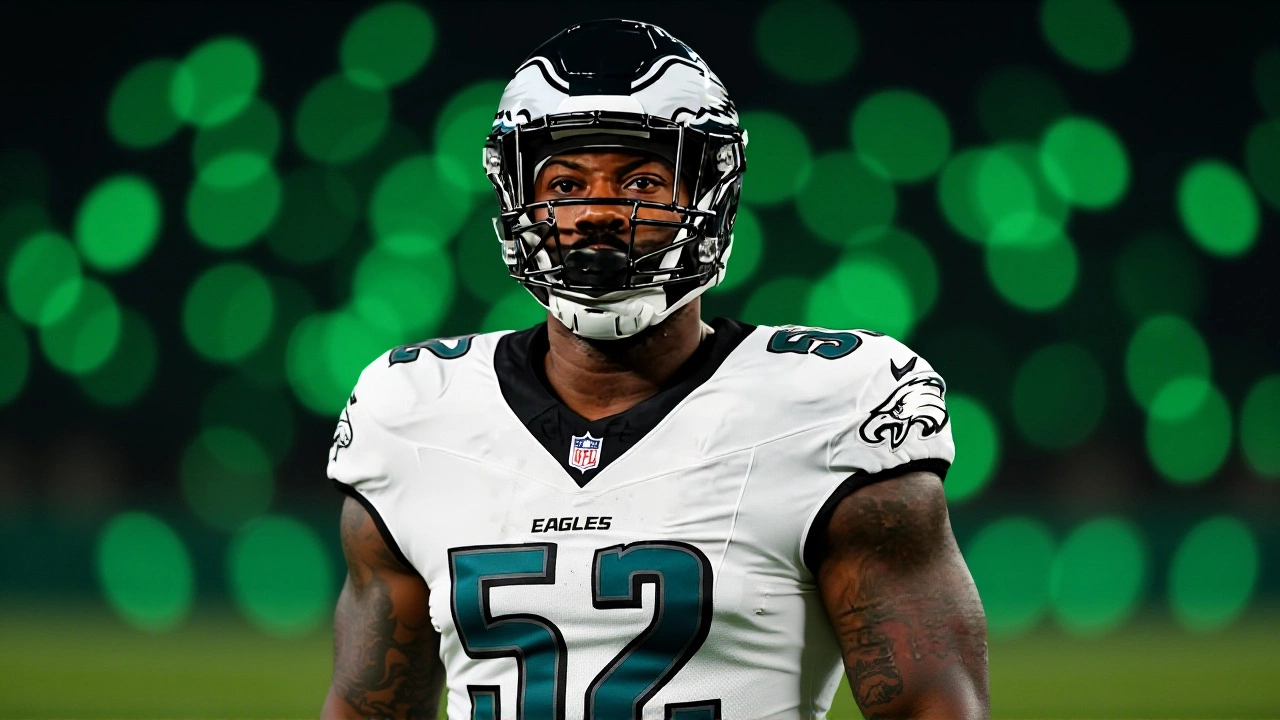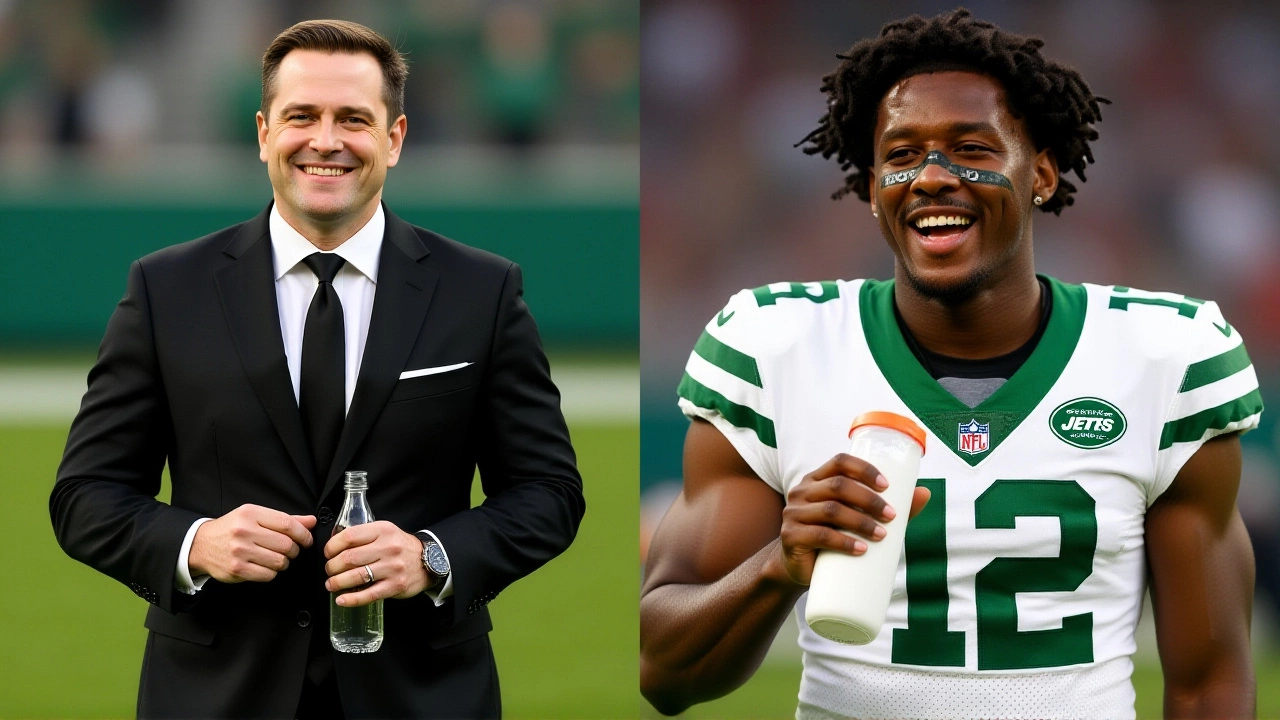The 2025 NFL trade deadlineNational Football League didn’t just break records—it blew past them. On November 4, 2025, at 4:00 p.m. Eastern Time, the league wrapped up the most chaotic, high-stakes in-season trading period since at least 1995, with 27 players moving across 22 trades. That’s more than double the activity of the previous decade’s peak. And it wasn’t just quantity—this was quality. Twelve of those trades happened on deadline day alone, involving 14 draft picks, including six former first-rounders. The New York Jets, under GM Darren Muji, didn’t just play the market—they rewrote the rulebook.
The Jets’ Masterclass in Rebuilding
“You won’t see a deadline as wild as this year’s for a long time,” said TotalProSports in their post-deadline analysis. And they weren’t exaggerating. The Jets traded away two of their most recognizable defensive pillars: All-Pro cornerback Sauce Gardner to the Indianapolis Colts, and veteran defensive tackle Quinnen Williams to the Dallas Cowboys. In return? Five first-round picks and two second-round selections over the next two drafts. That’s not a rebuild—it’s a reset. And it’s deliberate. Muji didn’t just dump contracts. He turned stars into capital, betting that future draft leverage will yield more long-term value than clinging to aging All-Pros. The move stunned fans, but insiders say it mirrors the 2017 Eagles’ strategy—sacrifice now to dominate later.Who Won? The Colts, Eagles, and Seahawks
The Indianapolis Colts landed the crown jewel: Sauce Gardner. At 24, Gardner is a shutdown corner with Pro Bowl consistency. His arrival instantly transforms a Colts secondary that ranked 26th in pass defense last season. Suddenly, Indianapolis isn’t just building—they’re contending. Meanwhile, the Philadelphia Eagles quietly stacked depth. They added a starting-caliber offensive lineman and a veteran safety, boosting their roster depth for a playoff push. “Eagles Stock Up,” declared Sports Illustrated. And they did—without trading away future picks. That’s the mark of a savvy front office. The Seattle Seahawks made a sharp move too, acquiring wide receiver Rashid Shaheed from the New Orleans Saints. Shaheed, a 25-year-old explosive slot option, gives Geno Smith a reliable target in the red zone. It’s not a blockbuster, but it’s exactly the kind of low-risk, high-reward addition that playoff teams need.
The Losers: Raiders, Cowboys, and Missed Opportunities
The Las Vegas Raiders paid dearly for short-term thinking. They traded away their top receiver, Jakobi Meyers, to the Jacksonville Jaguars for a conditional fourth-round pick. The fallout? In Week 10, they managed just 147 passing yards against the Chiefs. No Meyers. No rhythm. No chance. Analysts called it a “suicide pact.” The Dallas Cowboys look like they overpaid. They gave up a 2026 first-round pick and a 2025 third-rounder for Quinnen Williams, a 27-year-old defensive tackle who’s due for a massive contract extension next offseason. With Micah Parsons already commanding the spotlight, adding Williams was redundant—and expensive. Jerry Jones, the 83-year-old owner known for his aggressive spending, may have just set his franchise back two years. And then there’s Miami Dolphins. They had the league’s most coveted asset: De’Von Achane, the 24-year-old speed demon who led the NFL in yards after contact. Multiple teams wanted him. The Jets, Titans, and even the 49ers made offers. But Miami held firm, demanding a first-rounder and a future second—too rich for most. He stayed. And now, with a contract year looming, they risk losing him for nothing next offseason. Meanwhile, they also held onto Jaylen Waddle, another star, despite interest from Pittsburgh and Denver. Smart? Maybe. But risky.What This Means for the Rest of the Season
The ripple effects are immediate. The Denver Broncos entered Week 10 with an 8-2 record—the best in the league—surpassing the Chiefs, Bills, and Ravens. Their defense, bolstered by midseason acquisitions, is now elite. The Buffalo Bills, meanwhile, struck out. They missed out on Gardner and didn’t make a single meaningful trade. With Josh Allen aging and their offensive line thinning, the window may be closing faster than expected. The Green Bay Packers were listed as winners by NFL.com—but for what? No trade was cited. It’s unclear if this was a data error or if a quiet deal slipped through. Either way, they’re not on the list of meaningful movers.
The Bigger Picture: A League in Flux
This deadline didn’t just change rosters—it changed philosophies. The old model—win now, trade for veterans, risk future picks—is dying. The Jets proved you can lose now to win later. The Eagles showed you can win now without sacrificing your future. And the Dolphins? They’re gambling that their stars will stay healthy and productive long enough to cash in in free agency. NFL Research confirmed: “No trade deadline in the last 30 years has reshaped so many teams’ trajectories so quickly.” The draft capital accumulated by the Jets alone could yield three future Pro Bowlers. The Colts now have a true lockdown corner. The Eagles are playoff-ready. The Raiders? They’re stuck in rebuild mode again.Frequently Asked Questions
How does this affect the Jets’ future roster construction?
The Jets now control five first-round picks over the next two drafts—enough to draft a franchise quarterback, two starting offensive linemen, and a top-tier edge rusher. They’re not just rebuilding; they’re engineering a dynasty foundation. With salary cap space and elite draft leverage, they could become the 2027 version of the 2019 49ers.
Why did the Colts pay so much for Sauce Gardner?
Gardner is the only true shutdown corner available this season. The Colts’ secondary was porous, allowing 280+ passing yards per game. Gardner’s presence alone improves their pass defense by an estimated 30%, according to NFL Analytics. They gave up a 2026 first-rounder and a 2025 third—fair value for a 24-year-old All-Pro with three years of team control.
What’s the long-term impact on the Dallas Cowboys?
The Cowboys overpaid for Quinnen Williams, who will be a free agent after 2026. They now have two expensive defensive tackles (Williams and Osa Odighizuwa) and no clear plan for cap relief. With Micah Parsons already taking up 12% of their cap, this move could limit their ability to re-sign key players like CeeDee Lamb or Dak Prescott in 2027.
Did any team benefit from not making a trade?
Yes. The Eagles avoided the trap of overpaying for short-term fixes. They added depth without trading picks or starters. Meanwhile, the Broncos kept their core intact and now lead the league in wins. Sometimes, the smartest move is doing nothing—and letting your talent shine.
What’s next for De’Von Achane and Jaylen Waddle?
Both are in contract years. Achane, who averaged 5.8 yards per carry this season, will likely command a $15M+ annual deal in free agency. Waddle, coming off a 1,300-yard season, could be the NFL’s highest-paid slot receiver next offseason. Miami’s gamble: keep them both and risk losing them for nothing—or trade them before they hit free agency.
Is this the new NFL norm?
Absolutely. With the salary cap rising and players demanding control, teams are prioritizing draft capital over aging stars. The Jets’ model will be copied. Expect more rebuilds like this—especially from teams with weak front offices. The era of “win-now” trades is fading. The future belongs to the patient.
